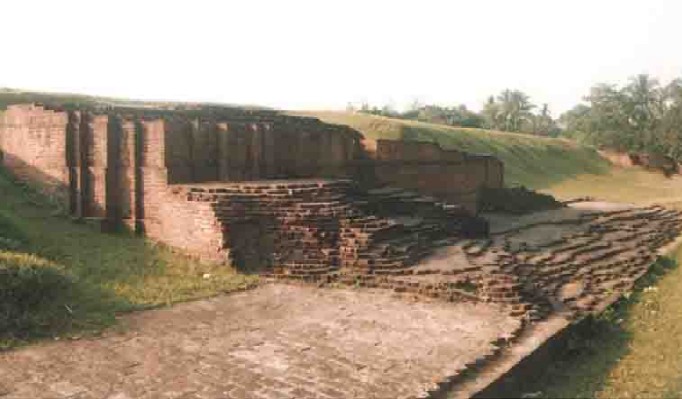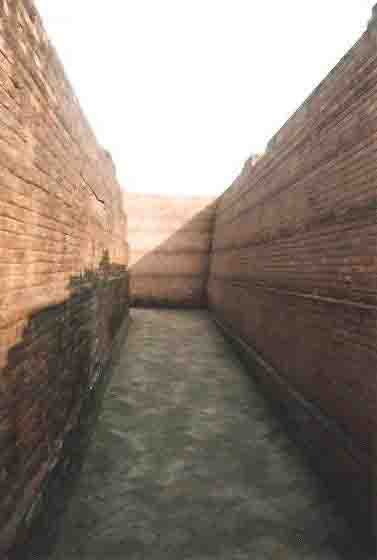|
The Telegraph - Metro on Sunday 25th February 2007.
Next weekend you can be at ... Ballal Dhipi...
For centuries, a 30-ft mound spread over 1,300 sq ft, has stood at Bamunpukur, a village near Mayapur. The locals call it Ballal Dhipi, named after Ballal Sen, of the Sen dynasty, who ruled Bengal in the late 12th Century AD. It was only in the late 1970s that the mound attracted the attention of Archaeological Survey of India (ASI).
 It started digging the area in the early 1980s. The work was carried out in two phases — in 1982-83 and 1988-99. The excavation revealed a gigantic brick structure in an extensive yard surrounded by walls. Stucco heads, terracotta human and animal figurines, copper utensils and other objects were found at the site. It started digging the area in the early 1980s. The work was carried out in two phases — in 1982-83 and 1988-99. The excavation revealed a gigantic brick structure in an extensive yard surrounded by walls. Stucco heads, terracotta human and animal figurines, copper utensils and other objects were found at the site.
Almost nothing is known about the background of the structure. But that will not hamper a weekend outing at the site, about 125 km from the city. The visit can be clubbed with a trip to Mayapur.
Ballal Dhipi can be reached via Krishnagore. It is best to take a morning train. Get off at Krishnagore station and take a rickshaw to the bus terminus.
The journey to Bamunpukur Bazar, on the way to Mayapur, will take about 45 minutes. Cross the road after getting off the bus, take a right and walk past a Kali temple to Ballal Dhipi.
An ASI board declares the monument to be of national importance. The walls enclose a complex maze. It is difficult to figure out what it represented.
It is evident that the structure on top was built over an earlier one. According to historians, it dates back to the 12th Century. The earlier structure was built between 8th and 9th Century. Archaeologists have found traces of renovation and superimposition over the remains of a temple complex. 
The site is remarkably well preserved. A flight of stairs leads to the top of the mound. On the left of the gigantic construction are some minor structures. The main one contains the stucco stone head of a crocodile. Located near the bottom of a wall, it probably served as a water outlet.
Sadly, this is the only stucco work left on the site. The other stucco stone and terracotta figures, along with the artefacts excavated, have been removed to Ashutosh Museum of Calcutta University.
On the top of Ballal Dhipi, the stairs merge with a brick path, leading inside the gigantic structure. The passage to the its back is narrow, roofless and flanked by high walls. The backside offers a panoramic view of the compound.
The wall around the yard is surrounded by another wall. The outer wall, of which only fragments remain, is adorned with beautiful brickwork. The magnitude of the structure can be gauged from the thickness of the wall.
It is a pity that not many people are aware of Ballal Dhipi. But that is also a blessing in disguise for the few who drop in.
Going :
Trains are regularly available from Sealdah to Krishnagore. The 100-km journey takes about two hours 15 minutes. Take a rickshaw from the station to the bus stop. The trip takes about 10 minutes. A bus will take you to Bamunpukur Bazar in about 45 minutes.
Staying :
A day trip is sufficient. Bamunpukur has no eateries,so it is best to have your food at Mayapur or Krishnagore.
(METRO ON SUNDAY THANKS READER RANGAN DATTA FOR THIS CONTRIBUTION. PICTURES BY AUTHOR)
| 
